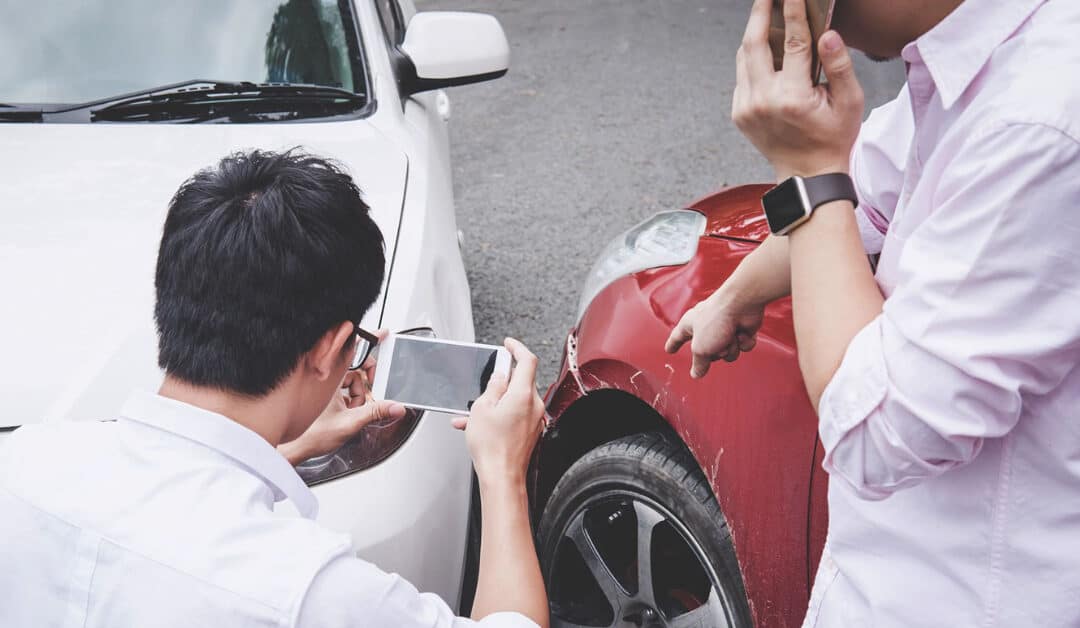Car crashes in Texas are at an all-time high. “3,893 people were killed in automobile crashes during 2020 in Texas, up from 3,623 deaths in 2019. According to the Texas Department of Transportation, that increase occurred even though traffic volumes were about 50% below normal for several months of the year. For 2021, there have been 1,426 deaths on Texas roads.” (1) If you are one of the unlucky ones in a car accident, you may not know the next steps. Let’s look at what to do after a car accident in Texas.
After Impact
After a car accident in Texas, your mind races, your pulse skyrockets, and you check for injuries. Your blood pounds in your ears as you wonder, “Whose fault is this accident?” It is easy to see your own perspective on the accident. However, often drivers disagree about how the turn of events happened. With witnesses, police officers, and drivers’ stories, there are differing ways of seeing fault.
Before worrying about whose fault the accident is, make sure your vehicle is in a safe place and that all occupants of the vehicles are secure. Call the police and an ambulance if needed. The first and most important step is making sure others are physically taken care of.
Police Reports
For an accident with significant damage or injuries, always call the police to the scene of the accident. Tell your version of events to the police officers at the scene. The police officer usually writes a report giving their objective retelling of your story.
They also report on the other driver’s story. The police that come to the scene note the positions of the vehicles and take pictures of the scene and vehicle damage. Often, they also draw a diagram of the road and scene.
Watch What You Say
Your statements become part of the investigation into who is at fault. Be careful about how you phrase your words and don’t speak without thinking.
Above all, do not admit fault at the scene. Take time to think about what happened when you are calmer and more reflective. Don’t blurt out thoughtless statements at the scene that may implicate you in some way.
Texas legislation determines fault through a “modified comparative fault” rule if more than one person caused the accident. Insurance adjusters, police, and witnesses all affect how you may receive compensation for your injuries.
If you are in a car accident in Texas, the degree of fault plays an important role in determining whose insurance pays for your damages. If you were at fault, you can file a claim with your own insurance, and if another driver was at fault, you should be able to file a claim with their insurance. For crashes with uninsured drivers or hit-and-run accidents, insurance claims can get much more complicated.
Car Insurance In Texas
Texas law requires all drivers to carry a minimum of bodily injury liability and property damage insurance coverage. According to the Texas Department of Insurance, there are several different types of coverages, including:
- Liability coverage pays to repair the other driver’s car if you caused the accident. It also pays the other driver’s and their passenger’s medical bills and some other expenses. Texas law requires you to have at least $30,000 of coverage for injuries per person, up to a total of $60,000 per accident, and $25,000 of coverage for property damage. This is called 30/60/25 coverage.
- Collision coverage to repair or replace your car after an accident.
- Comprehensive (other than collision) coverage if your car is stolen or damaged by fire, flood, vandalism, or something other than a collision.
- Medical payments coverage for you and your passengers’ medical bills. Also covers if you’re injured while in someone else’s car or while walking or biking.
- Personal injury protection (PIP) coverage pays you and your passengers’ medical bills and for lost wages or other nonmedical costs.
- Uninsured/underinsured motorist coverage if someone without insurance or low insurance coverage hits you with their vehicle. Coverage if you’re in a hit-and-run.
- Towing and labor coverage to tow your car if it is not driveable. Also pays for labor to change a flat tire or jump-start your battery.
- Rental reimbursement coverage for car rental if yours is stolen or repaired after an accident.
Deciding Fault
When two or more insured drivers are in an accident, Texas’ laws state that the at-fault driver’s insurance pays for the injuries of all involved parties. After the accident, you and the other driver may both contact your own insurance companies to make claims covering your vehicle damage and injuries. If you are less at fault, you can directly contact the other driver’s insurance company for claim coverage.
When you file with insurance, the claims adjusters look at the available evidence. They decide the fault for a driver based on available evidence and testimonies. They may call and ask to record your statement. If there is a disagreement, the adjusters will further discuss and negotiate. They will collect more data to support the scenarios suggested by the evidence.
Who Pays for An Accident?
When speaking with insurance companies, bring an attorney to any recorded statements. An attorney can help you know how to get your point across effectively. You want the adjuster to understand what happened, so your communication here is paramount. The last thing you need is for an adjuster to misunderstand your words.
Often, if you start your claims process with an attorney representing you, they can help guide you through insurance interviews and any other issues you may face. Insurance companies negotiate more with an attorney who communicates the law and facts of a case clearly. Attorneys know that the threat of taking a company or individual to court often brings about a better settlement. If your attorney doesn’t settle out of court for the amount of damages you deserve, you may go to trial.
If you do end up in court, a jury calculates the amount of your awarded damages based on the available evidence. They also decide the percentage of fault that belongs to each individual involved in the accident.
Protect Yourself in the Future
If you purchase more liability coverage for the future, it is less likely that you will get personally sued if you are at fault for a future accident. Minimum liability limits are set low and are often not enough to cover you if you are at fault for significant damages or multiple injuries. If your liability coverage is not enough, another driver can sue you personally and win. Protect yourself with more coverage at higher dollar amounts.
We Can Help
If you are in a car accident and not sure who to turn to, contact us at Jarrett Law. We are on your side from day one to make sure your rights are protected. Insurance companies may not want to pay out what you deserve for damages. If you have significant repairs for vehicles along with injuries, ensure that you get the best outcome for your situation by working with an experienced personal injury attorney. At Jarrett, we put you first with close attention to your struggle as we work to settle your case and help you move forward. Contact us today to find out how we can help.

